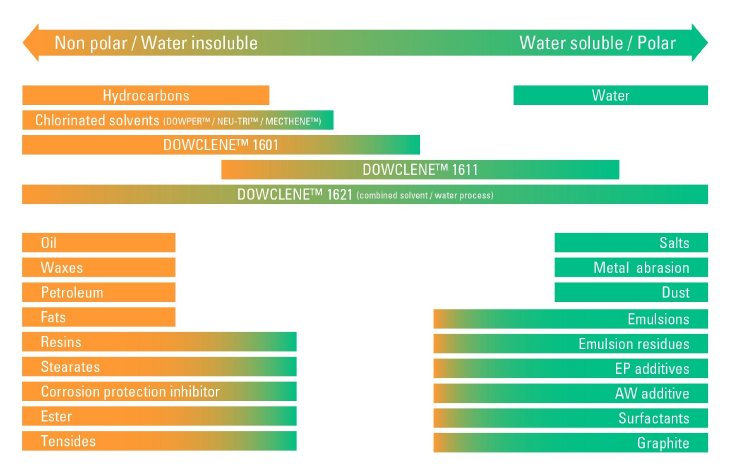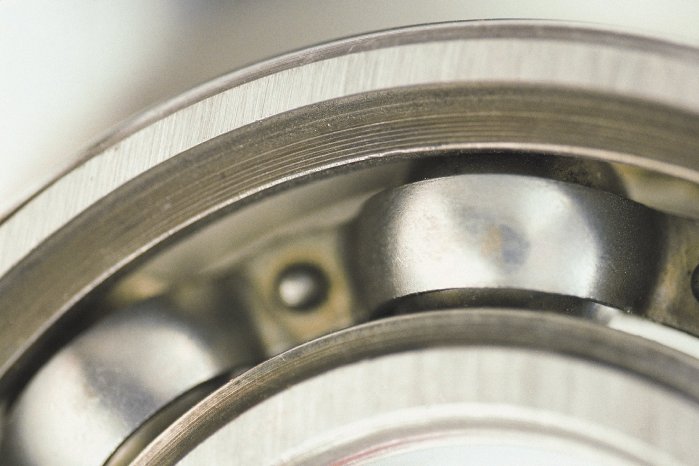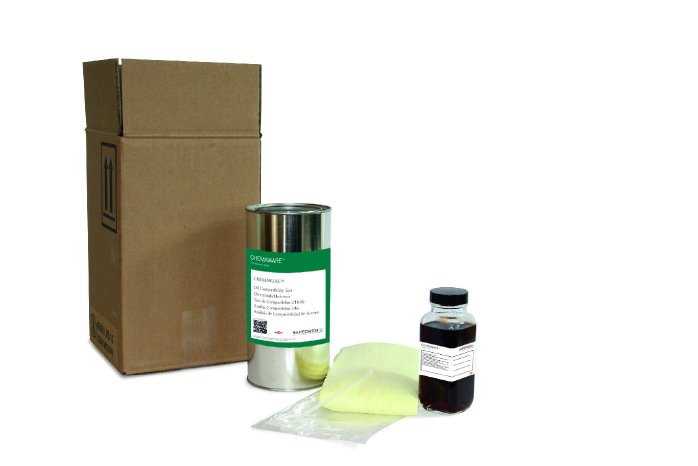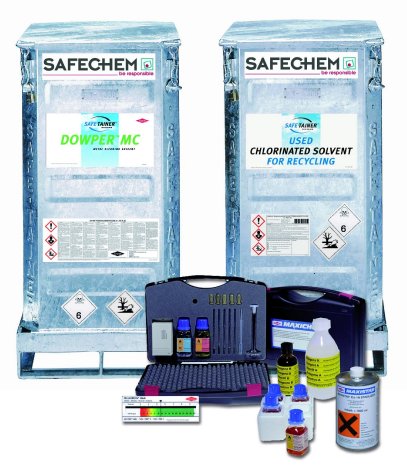Manufacturing and processing metallic parts is inevitably connected with dirt on the part's surface afterwards. These contaminations, such as machining oil and emulsion, usually influence the quality of subsequent manufacturing processes, e. g. coating, welding, bonding, and assembling, and may impair the functionality of the finished product. Thus, the task of industrial parts cleaning is to fulfil requirements for parts cleanliness which result from downstream processes. Mostly wet-chemical cleaning techniques are used for that purpose.
Cleaning with solvents or aqueous media? Type of contamination, material and geometry are essential factors Quality, cost-efficiency, stability and processing time of industrial parts cleaning operations critically depend on the dissolving capacity of the used cleaning agent. Most frequently used agents are aqueous detergents and solvents. In selecting the right cleaning medium, the "equal dissolves equal" principle of chemistry applies. In other words: for water-based (polar) types of contaminations such as coolant and lubricant emulsions as well as for removing solids like chips, salt, residues of polishing pastes and particles, aqueous cleaning agents are typically the first choice. They are available in neutral pH, alkaline and acidic formulations. It is advisable to test compatibility with the part material and the achievable result by cleaning trials beforehand. In order to ensure a consistent cleaning performance, aqueous processes should be subjected to regular process monitoring, with control of key process parameters such as detergent concentration, temperature, rinse water quality and filter condition.
When removing mineral oil based, non-polar contaminations, e. g. machining oils, greases and waxes, a solvent will commonly be the preferred cleaning agent. When washing away the oil, swarf and particles, the components will lose their adhesion which then can be removed mechanically, e. g. by ultrasonic cleaning or injection flood washing.
Some traditional applications for solvent cleaning are
- Cleaning of heavily oiled contaminated parts which would require extensive conditioning efforts and lead to short running life in case of using an aqueous cleaning agent. This would also result in high consumption and expenses for chemistry, water and energy as well as high waste management costs. Additionally the often necessary bath exchanges would reduce the availability of the cleaning machine.
- Cleaning of workpieces which are difficult to dry such as thin-walled and capillary parts, as well as stampings and bent parts. In these cases aqueous cleaning with hot-air drying would consume large amounts of energy and the process time would be much longer.
- Cleaning tasks in industries such as aviation and aerospace where process approvals are based on the use of solvents in order to assure flawless degreasing.
- Cleaning of small parts, e.g. in the electronics industry, which requires good material compatibility and a non-corrosive cleaning agent.
- Intermediate cleaning steps. On the one hand, to avoid the mixture of different processing media whose removal would mean big efforts later or which in the worst case couldn't be removed anymore. On the other hand, intermediate cleaning steps with solvents are carried out in order to minimise the amount of oily contamination brought into final aqueous cleaning processes and to extend the life span of the aqueous media. This is often the case e. g. in medical device manufacturing.
Efficient and sustainable solvent-cleaning The most common solvents in metal forming and processing industries include chlorinated hydrocarbons (CHCs) such as perchloroethylene, and modified alcohols such as DOWCLENE. They are characterised by good material compatibility which allows using these agents for virtually all types of metals. Additionally cleaning takes place without corrosion, oxidation, discolouration, burning, dulling or other impairment of the part surface.
The non-flammable, virgin perchloroethylene DOWPER MC from SAFECHEM Europe GmbH, a subsidiary of The Dow Chemical Company, can be used for cleaning and degreasing of metal parts with very complex geometries. It contains a special stabiliser which makes it suitable for heavy duty applications. Due to the relatively high boiling point of 121 °C and the resulting high vapour temperature, even high-melting, oxidised or hardened grease and contaminants can be removed reliably. Additionally, DOWPER MC shows minimal surface tension and is chemically very stable. Another advantage of the solvent is its low evaporation rate. This allows for fast and complete drying of the parts, which results in short cycle times - and they are achieved in case of geometrically very complex parts as well as of parts made of porous metals from which trapped moisture is often difficult to remove. Thanks to the possibility of re-stabilsation an operating life of the perchloroethylene of several years can be achieved.
With DOWCLENE 1601 SAFECHEM offers a solvent based on modified alcohols. It is used as an alternative for chlorinated hydrocarbons, non-halogenated hydrocarbons and aqueous media. DOWCLENE 1601 offers lipophilic and hydrophilic properties which enable the removal of oils and greases as well as the elimination of polar contaminations, e. g. emulsions or finger prints, with excellent results. It is also an ideal solution when it comes to difficult applications such as cleaning of heat exchangers, micro-polished parts and expensive precision parts. DOWCLENE 1601 can be distilled, is non-corrosive and dries quickly and residue-free. Typical applications include cleaning prior to heat treatment, coating, welding, vacuum brazing and bonding.
For DOWPER MC as well as for DOWCLENE 1601 SAFECHEM offers test kits which allow to easily check the solvent quality. When it comes to the decision which solvent is optimally suited for the cleaning task in question, the oil compatibility tests and solvent analysis of the CHEMAWARE lab-services enable a sound decision.
Temporary corrosion protection - efficiently solved Before reaching their point of use, parts travel thousands of kilometres by ship, plane or rail. Hence they must be effectively protected from corrosion. Solvents have established as a reliable and cost-effective alternative in this regard. DOWPER MC or DOWCLENE 1601 is therefore mixed with a standard commercial, solvent-free concentrated preservation product and then applied to the part after cleaning. This step can be integrated into the cleaning machine or performed as a single step in a separate system.
Solvent cleaning from the aspect of resource and energy efficiency From the time when solvents were used in open cleaning machines they are partly stigmatised from the environmental point of view in industrial parts cleaning. However, for many years, solvents can be used in closed-loop systems which support their environmentally-sound and sustainable handling. This includes, on the one hand, completely closed cleaning machines, which operate under full vacuum and fulfil the requirements of the VOC Directive (Volatile Organic Compounds). The machines are usually equipped with an integrated distillation system. It provides continuous reconditioning of the solvent, thus enabling a long solvent operating life and low consumption. Additionally the cleaning machines are mostly equipped with heat recovery systems for reclaiming the thermal energy associated with distillation. On the other hand, the SAFE-TAINER system developed by SAFECHEM significantly contributes to the environmentally-sound operation. The system contains two different, double-walled containers - one for the delivery of virgin solvent, the other one for take-back of the used cleaning agent. In combination with a closed cleaning machine, the SAFE-TAINER system enables virtually emission-free cleaning processes with solvents.
About Dow
Dow (NYSE: DOW) combines the power of science and technology to passionately innovate what is essential to human progress. The Company is driving innovations that extract value from the intersection of chemical, physical and biological sciences to help address many of the world's most challenging problems such as the need for clean water, clean energy generation and conservation, and increasing agricultural productivity. Dow's integrated, market-driven, industry-leading portfolio of specialty chemical, advanced materials, agrosciences and plastics businesses delivers a broad range of technology-based products and solutions to customers in approximately 180 countries and in high growth sectors such as packaging, electronics, water, coatings and agriculture. In 2013, Dow had annual sales of more than $57 billion and employed approximately 53,000 people worldwide. The Company's more than 6,000 products are manufactured at 201 sites in 36 countries across the globe. References to "Dow" or the "Company" mean The Dow Chemical Company and its consolidated subsidiaries unless otherwise expressly noted. More information about Dow can be found at www.dow.com.





